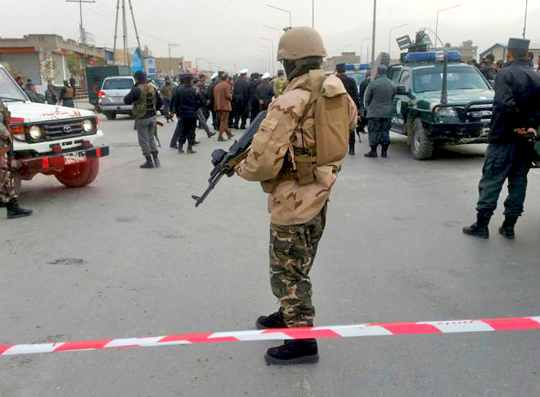Washington, Jun 14: US President Donald Trump has given Defence Secretary Jim Mattis the authority to determine troop levels in Afghanistan, media reports said today, paving the way for sending more American forces to the war-torn country.

Such an authorisation was granted to Mattis by Trump yesterday.
Mattis, according to The New York Times, is believed to favour sending several thousands more troops to Afghanistan, but has not taken a final decision in this regard.
Neither the White House nor the Pentagon confirmed the news.
"I don't have anything I can comment on that right now. I would refer you to Secretary Mattis at this point," White House Deputy Press Secretary Sarah Sanders told reporters.
The US currently has some 8,400 troops in Afghanistan. Army General John Nicholson, the top US commander in Afghanistan, told Congress that he could use an infusion of US and allied troops to bolster support for the Afghan army.
Earlier this year, the Pentagon was considering a request for roughly 3,000 more troops, mainly for training and advising. That decision, however, has been stalled by the broader administration review of Afghan policy and a push for NATO to contribute more troops.
This sets the stage for US commanders to begin sending more forces to Afghanistan, after years of reductions made in the hope that Kabul could handle internal threats on its own.
Mattis, the former commander of all Middle East wars, said yesterday that the US is not winning the war in Afghanistan.
"We're not winning in Afghanistan right now," Mattis said, adding: "We'll correct this as soon as possible".
Mattis later described winning in Afghanistan as forming a central government that, with international help, "will be able to handle the violence."
The new admission from the retired Marine Corps four-star general comes as Congress grows increasingly impatient for a new strategy from the Trump administration for America's longest war as Taliban insurgents continue to regain ground and increase power, including launching coordinated attacks on American troops and journalists in recent weeks.
The Afghanistan war has been dragging on since October 2001 and the US-led coalition ended their combat mission against the Taliban in 2014 but they are increasingly involved in backing up Afghan forces on the battlefield.





Comments
Add new comment